#Frederick V of the Palatine
Explore tagged Tumblr posts
Photo

The Winter King on the Ice, 1621, print by Cornelis Ploos van Amstel after a drawing by Hendrick Avercamp
Dutch, 1766
Rijksmuseum
#Winter King#Frederick V of the Palatine#Cornelis Ploos van Amstel#Hendrick Avercamp#print#Dutch#art#winter#ice#Rijksmuseum
41 notes
·
View notes
Text
on the kinda shit that turn me into a prince-elector of the Holy Roman Empire and ooh baby i'm about to start a 30 years long war
54 notes
·
View notes
Text
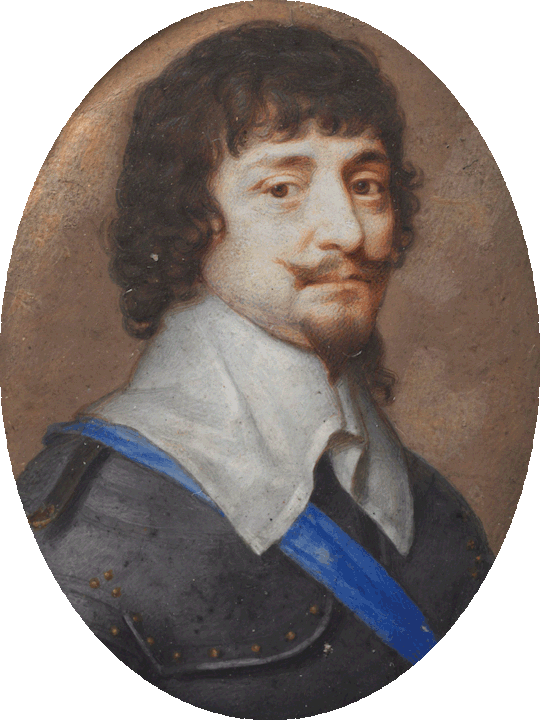
John Hoskins (British, ca.1590-1665) Portrait of Frederick V, Elector Palatine, King of Bohemia, 1630s The Cleveland Museum of Art
#John Hoskins#british#british art#bohemia#frederick v#elector palatine#male portrait#male#portrait#king#royalty#european history#european#history#art#fine art#european art#classical art#europe#oil painting#fine arts#europa#royal#kingdom#1500s#1600s
17 notes
·
View notes
Photo
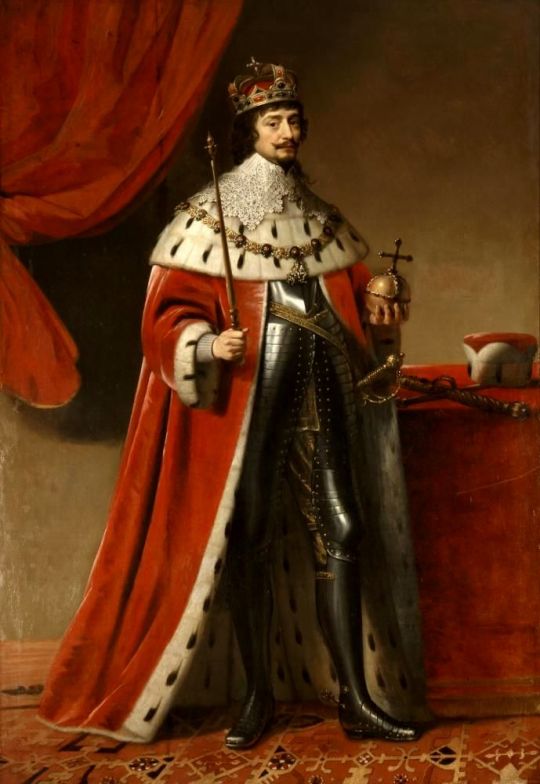
Portrait of Frederick V, Elector Palatine (1596-1632), as King of Bohemia. By Gerard van Honthorst.
#České království#königreich böhmen#kingdom of bohemia#frederick v#Český král#full length portrait#in armour#house of wittelsbach#pfalz simmern#house of palatinate simmern#haus wittelsbach#full-length portrait#Ať žije král#god save the king#official portrait#coronation robes#elector palatine
10 notes
·
View notes
Text



I had to do it: all of Elizabeth and Frederick V's children to have reached adulthood!
3 notes
·
View notes
Video
'Frederick V of the Palatinate' anagrams to 'Deathlike of fanatic pervert.' by Iason Ragnar Bellerophon Via Flickr: 'Frederick V of the Palatinate' anagrams to 'Deathlike of fanatic pervert.'
#jason#robert#bell#torsten#burns#'Frederick#V#Palatinate'#anagrams#'Deathlike#fanatic#pervert.'#flickr
0 notes
Photo
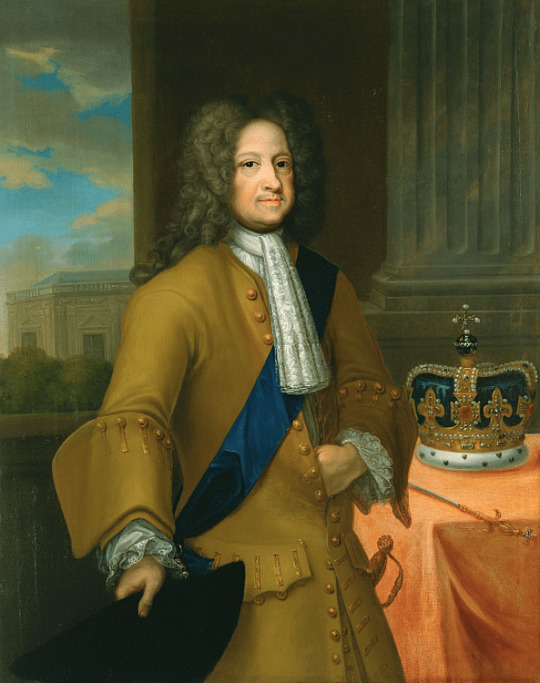
George I of Great Britain
George I of Great Britain (r. 1714-1727) succeeded the last of the Stuart monarchs, Queen Anne of Great Britain (r. 1702-1714) because he was Anne's nearest Protestant relative. The House of Hanover secured its position as the new ruling family by defeating several Jacobite rebellions which supported the old Stuart line.
King George may have struggled with both English and the English, often preferring his attachments in Germany, but his reign was a relatively stable one. His greatest legacy was as a patron of the arts, in particular, his support of musicians like Handel and such lasting cultural institutions as the Royal Academy of Music. He was succeeded by his son George II of Great Britain (r. 1727-1760).
Succession: The House of Hanover
The Glorious Revolution of 1688 saw the end of the reign of the male Stuarts and placed William, Prince of Orange on the throne as William III of England (r. 1689-1702) with his wife, the daughter of the exiled James II of England (r. 1685-1688), made Mary II of England (r. 1689-1694). Mary's sister became the ruling monarch in 1702 as Anne, Queen of Great Britain. When Anne died, so ended the Stuart royal line, which had begun with Robert II of Scotland (r. 1371-1390).
Queen Anne outlived her husband Prince George of Denmark (1653-1708) by six years; she died at the age of 49 on 1 August 1714 at Kensington Palace after suffering two strokes. Queen Anne had had many children, but all died in infancy. The greatest hope for an heir had been William, Duke of Gloucester (b. 1689), but he died in 1700, aged 12. Anne's official heirs, the Hanoverian family, were selected as such in the 1701 Act of Settlement.
The Hanovers were connected to the British royal line as descendants of Elizabeth Stuart (d. 1662), daughter of James I of England (r. 1603-1625) and brief Queen of Bohemia through her husband Frederick V of the Palatinate. The chosen successor – although she was not permitted by Anne to even visit England – was Elizabeth Stuart's daughter Sophia (l. 1630-1714), wife of the Duke of Brunswick and Elector of Hanover (a small principality in Germany the size of Yorkshire). Sophie of Hanover was Queen Anne's nearest relation of the Protestant faith, a vital consideration given that Parliament had already passed a law forbidding a Catholic to take the throne. For this reason, more than 50 other claimants to the throne had been deemed unsuitable. When Sophia died in 1714, her son, George Ludwig, took over the role of heir apparent to the British throne.
Continue reading...
28 notes
·
View notes
Text


On November 7th 1619 Elizabeth Stuart was crowned Queen of Bohemia.
Elizabeth was the eldest daughter of James VI, and Anne of Denmark. She was thus sister to King Charles I and cousin to King Frederick III of Denmark.
Born in at Falkland Palace, Fife,on 19th August 1596, she was named Elizabeth in honour of the then-ageing English Queen, Elizabeth I, who had remained childless. Her older brothel was Prince Henry, of her other siblings, Charles would however go on to inherit the throne.
To all intents and purposes, Elizabeth had a happy upbringing at Linlithgow Palace, one of the grandest of Scotland’s royal residences, and one of my favourite places to wander around.
In 1603 her father James succeeded Elizabeth I to the English throne. Elizabeth was handed over to the care of Lord and Lady Harrington and took up residence at Coombe Abbey, Warwickshire.
Lord Harrington indulged her passion for nature, and in a secluded wilderness at the end of the park arranged the construction of a number of little wooden buildings in all the different orders of architecture which housed paintings and stuffed animals. He also established an aviary and a miniature menagerie (she continued to collect various animals throughout her life) which was later expanded to include meadows stocked with the smallest breeds of cattle from Jersey, Shetland and the Isle of Man. Elizabeth referred to her miniature world as ‘her Territories’ and ‘her Fairy farm’ and she engaged a pauper family as keeper of her birds and beasts.
Elizabeth idolised her older brother - they shared a love of life which eluded the sickly Charles, four years younger than his sister. Her letters to her brother Henry reveal a deep affection and and mutual respect. In 1605 she writes ‘My noble brother, I rouse you from sleep to remind you that I am your most humble servant, and desire above all that I might have the pleasure of remaining in your good graces and your best loved sister.’
Henry’s sickness and death on November 6, 1612, in the midst of Elizabeth's betrothal celebrations devastated her. It is not mentioned in Elizabeth’s letters of 1612 or 1613, a silence that suggest great mourning however her strength of character can be demonstrated by her attempts to gain access to Henry’s isolated sick room. Disguised as a country girl, she tried several times to gain admittance to Henry but was recognised and turned back. Henry’s last words were his sister’s name.
By the age of 12 Elizabeth’s political value was such that a member of the influential Hapsburg family, King Philip III of Spain, put himself forward as a eligible suitor. While Queen Anne relished the opportunity of a glittering Spanish throne, James’ mind was set on a Protestant:Frederick V, Prince Palatine of the Rhine in the Holy Roman Empire, frequently known as the Palsgrave.
Luckily for Elizabeth, Frederick was her own age, handsome, athletic, of a winning personality and generous. In many ways he resembled her brother Henry, with whom he developed a deep friendship. Frederick could not fail to love Elizabeth although she was initially more reserved.
On Valentine’s Day 1613, a spectacular wedding ceremony took place in the Royal Chapel at Whitehall Palace in London. At the time of their marriage, Elizabeth and her young groom Frederick V were destined to achieve international power and influence. However, by 1621, Elizabeth was in exile, destined to be remembered as the ‘The Winter Queen’, a derogatory epitaph that reflects the short duration of her rule in Bohemia, with her union with Frederick deemed a political failure.For almost two months, the young couple were feted and feasted in London before setting out on their journey to their new home in Heidelberg, in south west Germany. Elizabeth and Frederick eventually reached the Palatinate and its capital in Heidelberg situated on the banks of the river Neckar.
Six years later, in late 1619, Frederick and Elizabeth were crowned King and Queen of Bohemia (today part of the Czech Republic) at the invitation of the Bohemia Confederacy to prevent a Catholic incumbent ascending to the throne. Barely a year after receiving the crown, the couple were defeated at the Battle of the White Mountain, and driven from their court in Prague and deprived of all their Palatine lands by the Hapsburg Holy Roman Emperor Ferdinand II, events which led to one of the longest and most destructive conflicts in human history:The Thirty Years War.
During their separations whilst Frederick was on campaign, the couple wrote to each other three or four times a week, sometimes even twice in one day. Frederick describes Elizabeth as his ‘only heart’, he ‘kisses her mouth a million times in imagination’.
Frederick died unexpectedly from the plague at Mainz while on perpetual military campaign in 1632. So long as she lived, Elizabeth’s rooms were draped in black, and in memory of Frederick special days were set apart for fasting. She later wrote ‘though I make a good show in company, yet I can never have any more contentment in this world, for God knows I had none but that which I took in his company, and he did the same in mine.’
Elizabeth lived on in the Dutch Republic for a further 30 years, in voluntary exile, returning to England in 1661, a year before her death and a year after the restoration of her nephew, Charles II.
It is through Elizabeth’s daughter, Sophie, the Hanoverians line was established.
8 notes
·
View notes
Text
The Tempest
On this date in 1611, Shakespeare's romantic comedy The Tempest was first presented at Whitehall Palace in London. The play was first performed for James I as part of a season of festivities celebrating the marriage of his daughter Princess Elizabeth to Frederick V, the Elector of the Palatinate of the Rhine. 10 facts about Shakespeare's The Tempest:
9 notes
·
View notes
Text
Ages of English Princesses at First Marriage
I have only included women whose birth dates and dates of marriage are known within at least 1-2 years, therefore, this is not a comprehensive list. The average age at first marriage among these women was 16.
This list is composed of princesses of England when it was a sovereign state, prior to the Acts of Union in 1707.
Eadgyth (Edith) of England, daughter of Edward the Elder: age 20 when she married Otto the Great, Holy Roman Emperor in 930 CE
Godgifu (Goda) of England, daughter of Æthelred the Unready: age 20 when she married Drogo of Mantes in 1024 CE
Empress Matilda, daughter of Henry I: age 12 when she married Henry, Holy Roman Emperor, in 1114 CE
Marie I, Countess of Boulogne, daughter of Stephen of Blois: age 24 when she was abducted from her abbey by Matthew of Alsace and forced to marry him, in 1136 CE
Matilda of England, daughter of Henry II: age 12 when she married Henry the Lion in 1168 CE
Eleanor of England, daughter of Henry II: age 9 when she married Alfonso VIII of Castile in 1170 CE
Joan of England, daughter of Henry II: age 12 when she married William II of Sicily in 1177 CE
Joan of England, daughter of John Lackland: age 11 when she married Alexander II of Scotland in 1221 CE
Isabella of England, daughter of John Lackland: age 21 when she married Frederick II, Holy Roman Emperor, in 1235 CE
Eleanor of England, daughter of John Lackland: age 9 when she married William Marshal, Earl of Pembroke in 1224 CE
Margaret of England, daughter of Henry III: age 11 when she married Alexander III of Scotland in 1251 CE
Beatrice of England, daughter of Henry III: age 17 when she married John II, Duke of Brittany in 1260 CE
Eleanor of England, daughter of Edward I: age 24 when she married Henry III, Count of Bar in 1293 CE
Joan of Acre, daughter of Edward I: age 18 when she married Gilbert de Clare, Earl of Gloucester in 1290 CE
Margaret of England, daughter of Edward I: age 15 when she married John II, Duke of Brabant in 1290 CE
Elizabeth of Rhuddlan, daughter of Edward I: age 15 when she married John I, Count of Holland in 1297 CE
Eleanor of Woodstock, daughter of Edward II: age 14 when she married Reginald II, Duke of Guelders in 1332 CE
Joan of the Tower, daughter of Edward II: age 7 when she married David II of Scotland in 1328 CE
Isabella of England, daughter of Edward III: age 33 when she married Enguerrand VII, Lord of Coucy in 1365 CE
Mary of Waltham, daughter of Edward III: age 16 when she married John IV, Duke of Brittany in 1361 CE
Margaret of Windsor, daughter of Edward III: age 13 when she married John Hastings, Earl of Pembroke in 1361 CE
Blanche of England, daughter of Henry IV: age 10 when she married Louis III, Elector Palatine in 1402 CE
Philippa of England, daughter of Henry IV: age 12 when she married Eric of Pomerania in 1406 CE
Elizabeth of York, daughter of Edward IV: age 20 when she married Henry VII in 1486 CE
Cecily of York, daughter of Edward IV: age 16 when she married Ralph Scrope in 1485 CE
Anne of York, daughter of Edward IV: age 19 when she married Thomas Howard in 1494 CE
Catherine of York, daughter of Edward IV: age 16 when she married William Courtenay, Earl of Devon in 1495 CE
Margaret Tudor, daughter of Henry VII: age 14 when she married James IV of Scotland in 1503 CE
Mary Tudor, daughter of Henry VII: age 18 when she married Louis XII of France in 1514 CE
Mary I, daughter of Henry VIII: age 38 when she married Philip II of Spain in 1554 CE
Elizabeth Stuart, daughter of James VI & I: age 17 when she married Frederick V, Elector Palatine in 1613 CE
Mary Stuart, daughter of Charles I: age 10 when she married William II, Prince of Orange in 1641 CE
Henrietta Stuart, daughter of Charles I: age 17 when she married Philippe II, Duke of Orleans in 1661 CE
Mary II of England, daughter of James II: age 15 when she married William III of Orange in 1677 CE
Anne, Queen of Great Britain, daughter of James II: age 18 when she married George of Denmark in 1683 CE
33 notes
·
View notes
Photo
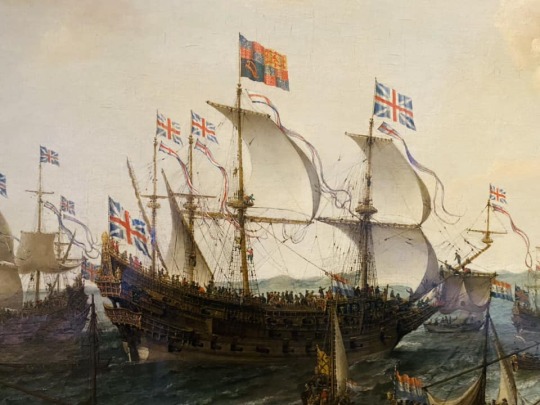
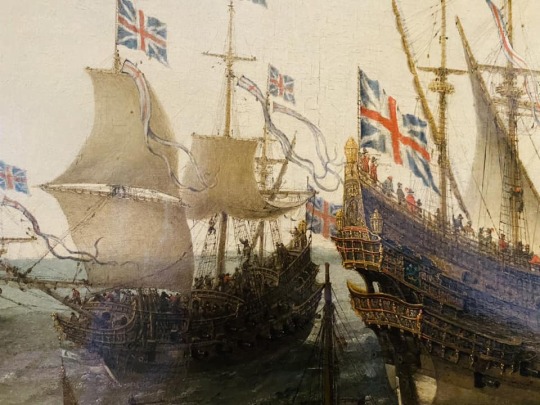

The Arrival of the Elector Palatine at Flushing, 20 April 1613 by Adam Willaerts. It shows Princess Elizabeth (James VI's daughter) with her husband Frederick V of the Palatinate arriving in the Netherlands. Their children would go on to found Britain's Hanoverian dynasty.
29 notes
·
View notes
Text
Events 6.15 (before 1900)
763 BC – Assyrians record a solar eclipse that is later used to fix the chronology of Mesopotamian history. 844 – Louis II is crowned as king of Italy at Rome by pope Sergius II. 923 – Battle of Soissons: King Robert I of France is killed and King Charles the Simple is arrested by the supporters of Duke Rudolph of Burgundy. 1184 – The naval Battle of Fimreite is won by the Birkebeiner pretender Sverre Sigurdsson. Sigurdsson takes the Norwegian throne and King Magnus V of Norway is killed. 1215 – King John of England puts his seal to Magna Carta. 1219 – Northern Crusades: Danish victory at the Battle of Lindanise (modern-day Tallinn) establishes the Danish Duchy of Estonia. 1246 – With the death of Frederick II, Duke of Austria, the Babenberg dynasty ends in Austria. 1300 – The city of Bilbao is founded. 1312 – At the Battle of Rozgony, King Charles I of Hungary wins a decisive victory over the family of Palatine Amade Aba. 1389 – Battle of Kosovo: The Ottoman Empire defeats Serbs and Bosnians. 1410 – In a decisive battle at Onon River, the Mongol forces of Oljei Temur were decimated by the Chinese armies of the Yongle Emperor. 1410 – Ottoman Interregnum: Süleyman Çelebi defeats his brother Musa Çelebi outside the Byzantine capital, Constantinople. 1502 – Christopher Columbus lands on the island of Martinique on his fourth voyage. 1520 – Pope Leo X threatens to excommunicate Martin Luther in Exsurge Domine. 1607 – Virginia Colonists finished building James's Fort, to defend against Spanish and Indian attacks. 1648 – Margaret Jones is hanged in Boston for witchcraft in the first such execution for the Massachusetts Bay Colony. 1667 – The first human blood transfusion is administered by Dr. Jean-Baptiste Denys. 1670 – The first stone of Fort Ricasoli is laid down in Malta. 1752 – Benjamin Franklin proves that lightning is electricity (traditional date, the exact date is unknown). 1776 – Delaware Separation Day: Delaware votes to suspend government under the British Crown and separate officially from Pennsylvania. 1800 – The Provisional Army of the United States is dissolved. 1804 – New Hampshire approves the Twelfth Amendment to the United States Constitution, ratifying the document. 1808 – Joseph Bonaparte becomes King of Spain. 1834 – The looting of Safed commences. 1836 – Arkansas is admitted as the 25th U.S. state. 1844 – Charles Goodyear receives a patent for vulcanization, a process to strengthen rubber. 1846 – The Oregon Treaty extends the border between the United States and British North America, established by the Treaty of 1818, westward to the Pacific Ocean. 1859 – Ambiguity in the Oregon Treaty leads to the "Northwestern Boundary Dispute" between American and British/Canadian settlers. 1864 – American Civil War: The Second Battle of Petersburg begins. 1864 – Arlington National Cemetery is established when 200 acres (0.81 km2) of the Arlington estate (formerly owned by the family of Confederate General Robert E. Lee) are officially set aside as a military cemetery by U.S. Secretary of War Edwin M. Stanton. 1877 – Henry Ossian Flipper becomes the first African American cadet to graduate from the United States Military Academy. 1878 – Eadweard Muybridge takes a series of photographs to prove that all four feet of a horse leave the ground when it runs; the study becomes the basis of motion pictures. 1888 – Crown Prince Wilhelm becomes Kaiser Wilhelm II; he will be the last Emperor of the German Empire. Due to the death of his predecessors Wilhelm I and Frederick III, 1888 is the Year of the Three Emperors. 1896 – One of the deadliest tsunamis in Japan's history kills more than 22,000 people.
2 notes
·
View notes
Note
My esteemed friend,
May I trouble you for some insider knowledge on Count Tilly (the year being 1622) wrecking Heidelberg?
Many thanks in advance
Oh my, that's a rather specific question, my dear friend!
I have to say, Tilly isn't my speciality; what I do know is though that a set of archeological findings from the time of Tilly laying siege to Heidelberg was coloquially named after him, and that Heidelberg has a historic trail route you can hike along to experience the sites of the siege.
Other than that, I just know the obvious basics and context of the wider conflict (the 30 Years' War, with Frederick V., Count Palatine of the Rhine, whose 'capital' Heidelberg was, involved as he had briefly been the King of Bohemia but had been ousted as the result of the Battle of the White Mountain in 1620). For any 'special' titbits, i. e. things you couldn't learn from the Wikipedia article, I think I am the wrong person to ask.
I am trying to think about Tilly-specific-Heidelberg-related things, but all I can come up with are later off-hand comments and reflections on the 30 Years' War by Frederick V.'s children and grandchildren, as I am quite familiar with the Palatine family, just at a slightly later date when the ex-King and Queen of Bohemia, unable to return to the Palatinate, and their ever-growing brood of children were living in the Netherlands.
I think, not being knowledgeable enough when it comes to the specific Stadtgeschichte of Heidelberg, I am the wrong person to answer your question, alas!
I can however offer you, as recompense, something amusing from the later letters of the Ex-Queen of Bohemia, or observations on life in her household in the late 1650s? She was instrumental in trying to broker a deal allowing her eldest surviving son to return to the Palatinate, but, the two having very much differing political views, they grew apart (there were other things standing between mother and son, too- animal hoarding, parentification and being mediocre at finances, to name but three explosive topics). She never returned to the Palatinate, whereas her son did, and subsequently transformed the castle at Heidelberg into the stuff of soap operas -- but that was decades after the siege in 1622.
Sorry that I can't be of greater help, my friend! If anyone has a Heidelberg-related Tilly titbit, please share it! :D
5 notes
·
View notes
Text
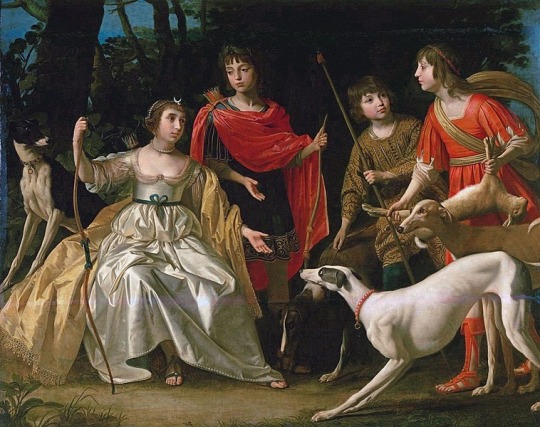
A 1631 painting of the four eldest children of Frederick V of the Palatinate (and King of Bohemia) and Elizabeth Stuart, Queen of Bohemia by Dutch painter Gerard van Honthorst.
From left: Princess Elisabeth of the Palatinate, Prince Rupert of the Rhine, Prince Maurice of the Palatinate and Prince Charles Louis (later Elector Palatine).
#17th century art#gerard van honthorst#princess elisabeth of the palatinate#prince rupert of the rhine#prince maurice of the palatinate#prince charles louis
22 notes
·
View notes
Photo

William Dobson - Group portrait of Prince Rupert, Colonel William Legge, and Colonel John Russell - ca. 1645
Ashmolean Museum, Oxford, UK
William Dobson (4 March 1611 (baptised); 28 October 1646 (buried)) was a portraitist and one of the first significant English painters, praised by his contemporary John Aubrey as “the most excellent painter that England has yet bred”. He died relatively young and his final years were disrupted by the English Civil War.
Prince Rupert of the Rhine, Duke of Cumberland, KG, PC, FRS (17 December 1619 (O.S.) / 27 December (N.S.) – 29 November 1682 (O.S.) 9 December 1682 (N.S)) was an English army officer, admiral, scientist, and colonial governor. He first came to prominence as a Royalist cavalry commander during the English Civil War. Rupert was the third son of the German Prince Frederick V of the Palatinate and Elizabeth, eldest daughter of King James VI and I of Scotland and England.
Prince Rupert had a varied career. He was a soldier as a child, fighting alongside Dutch forces against Habsburg Spain during the Eighty Years' War (1568–1648), and against the Holy Roman Emperor in Germany during the Thirty Years' War (1618–1648). Aged 23, he was appointed commander of the Royalist cavalry during the English Civil War, becoming the archetypal "Cavalier" of the war and ultimately the senior Royalist general. He surrendered after the fall of Bristol and was banished from England. He served under King Louis XIV of France against Spain, and then as a Royalist privateer in the Caribbean Sea. Following the Restoration, Rupert returned to England, becoming a senior English naval commander during the Second Anglo-Dutch War and Third Anglo-Dutch War, and serving as the first governor of the Hudson's Bay Company. He died in England in 1682, aged 62.
Rupert is considered to have been a quick-thinking and energetic cavalry general, but ultimately undermined by his youthful impatience in dealing with his peers during the Civil War. In the Interregnum, Rupert continued the conflict against Parliament by sea from the Mediterranean to the Caribbean, showing considerable persistence in the face of adversity. As the head of the Royal Navy in his later years, he showed greater maturity and made impressive and long-lasting contributions to the Royal Navy's doctrine and development. As a colonial governor, Rupert shaped the political geography of modern Canada: Rupert's Land was named in his honour, and he was a founder of the Hudson's Bay Company. Rupert's varied and numerous scientific and administrative interests, combined with his considerable artistic skills, made him one of the more colourful public figures in England of the Restoration period.
William Legge (1608 – 13 October 1670) was an English royalist army officer, a close associate of Prince Rupert of the Rhine.
John Russell (1620-1687) was an English soldier and politician who sat in the House of Commons from 1641 to 1644. He fought in the Royalist army in the English Civil War.
Russell was the third son of Francis Russell, fourth Earl of Bedford, known as the "wise earl", and his wife Catherine Brydges, daughter of Giles Brydges, 3rd Baron Chandos. He was a wealthy man with estates at Shingay, Cambridgeshire.
In 1641, Russell was elected Member of Parliament for Tavistock in the Long Parliament after his brother William Lord Russell inherited the peerage. Russell served in the King's army and was a member of the Sealed Knot. The family had divided loyalties in the Civil War. His father had been a champion of the parliamentary cause and his brother changed sides twice. He had many aristocratic equally vacillating connections among his brothers-in-law: the Parliamentarians, Lord Brooke and Lord Grey of Wark, the turncoat Earl of Carlisle and the Royalists Lord Bristol and Lord Newport of High Ercall. Russell commanded Prince Rupert's blue coated regiment of foot, and was disabled from sitting in parliament in 1644. He was prominent at the storming of Leicester in May 1645, was wounded at Naseby and was in the Oxford garrison before its surrender.
After the Restoration Russell was commissioned colonel and captain of John Russell's Regiment of Guards which became incorporated into the 1st Regiment of Foot Guards, or later the Grenadier Guards. He commanded the regiment until 1681. He enjoyed dress, dance, and music although his taste belonged to the fashion of an earlier generation.
13 notes
·
View notes
Text

Sophia of Hanover, Princess Palatine, Consort of Ernest Augustus, Elector of Hanover.
Gerrit van Honthorst, 1650.
Sophia of Hanover (1630–1714) was the daughter of the aforementioned (ADD LINK) Elizabeth Stuart, Queen of Bohemia and her husband Frederick V, Elector Palatine.
As the eldest remaining grandchild of James VI and I, Sophia was due to inherit the thrones of Great Britain and Ireland, but she died less than two months before she would have become Queen. Unusually for this period, she’d lived to a grand age - 83. Instead, her son became king - George I - beginning a new dynasty, the House of Hanover.
Source: Wikipedia (I know I shouldn't, but it’s a good starting point).
Here she is painted as a Native American by her sister, Louise Hollandine of the Palatinate, c. 1644.

2 notes
·
View notes